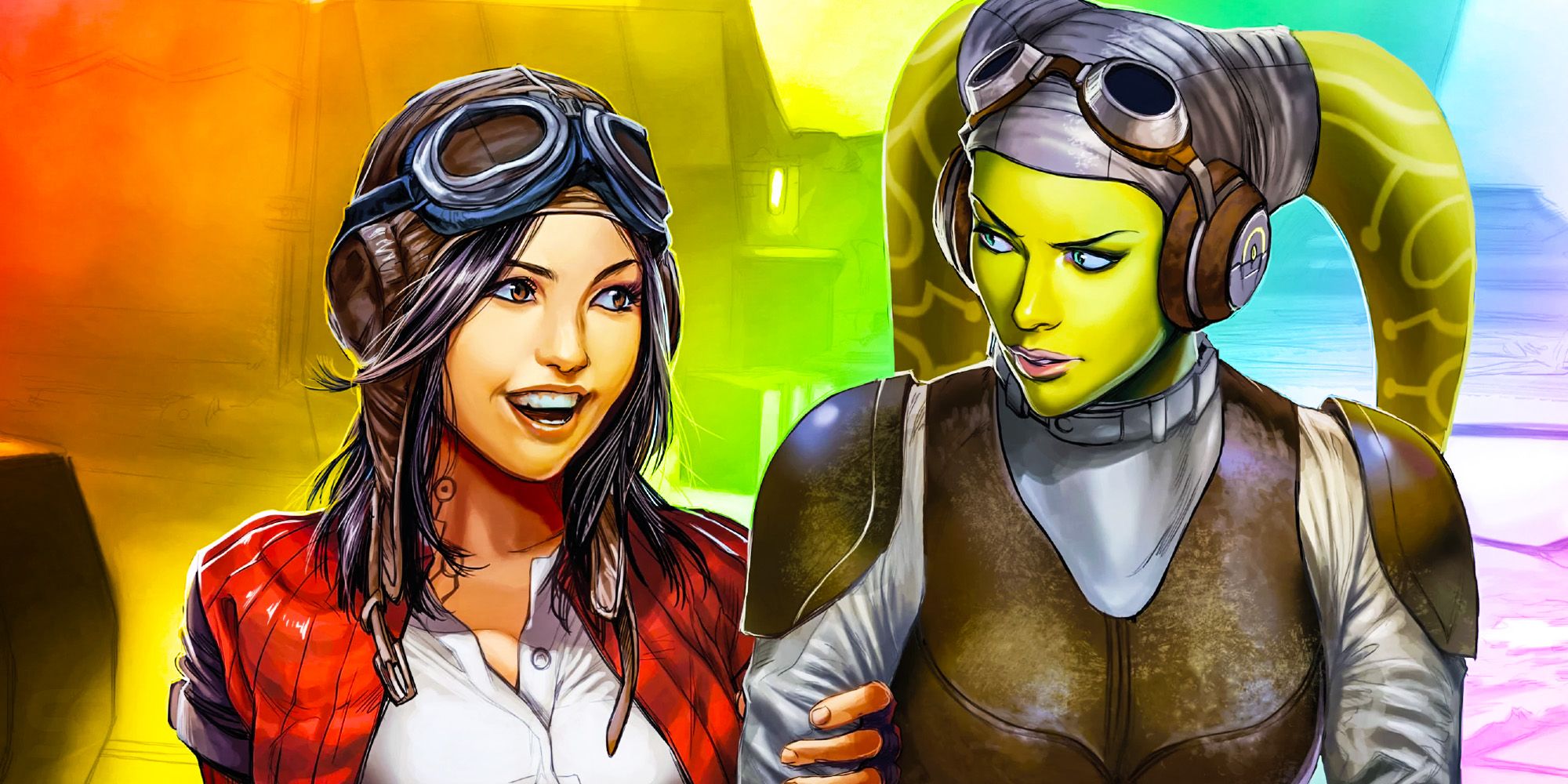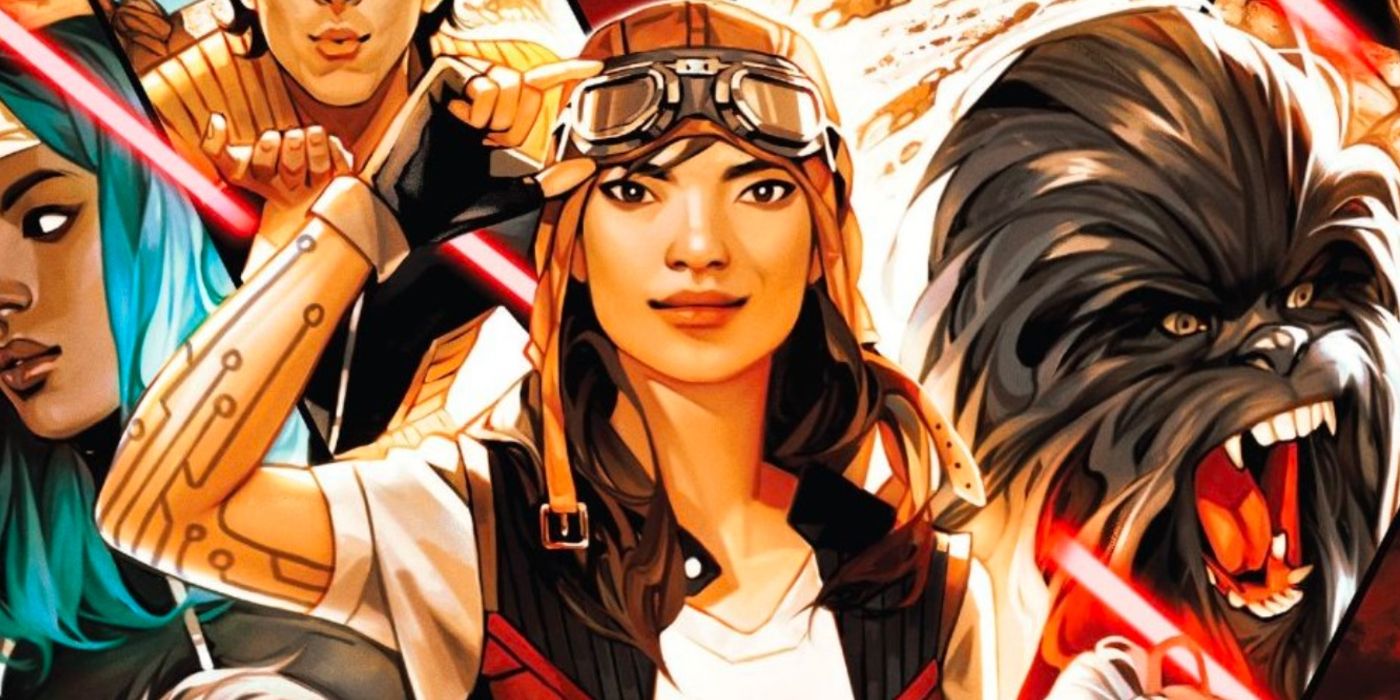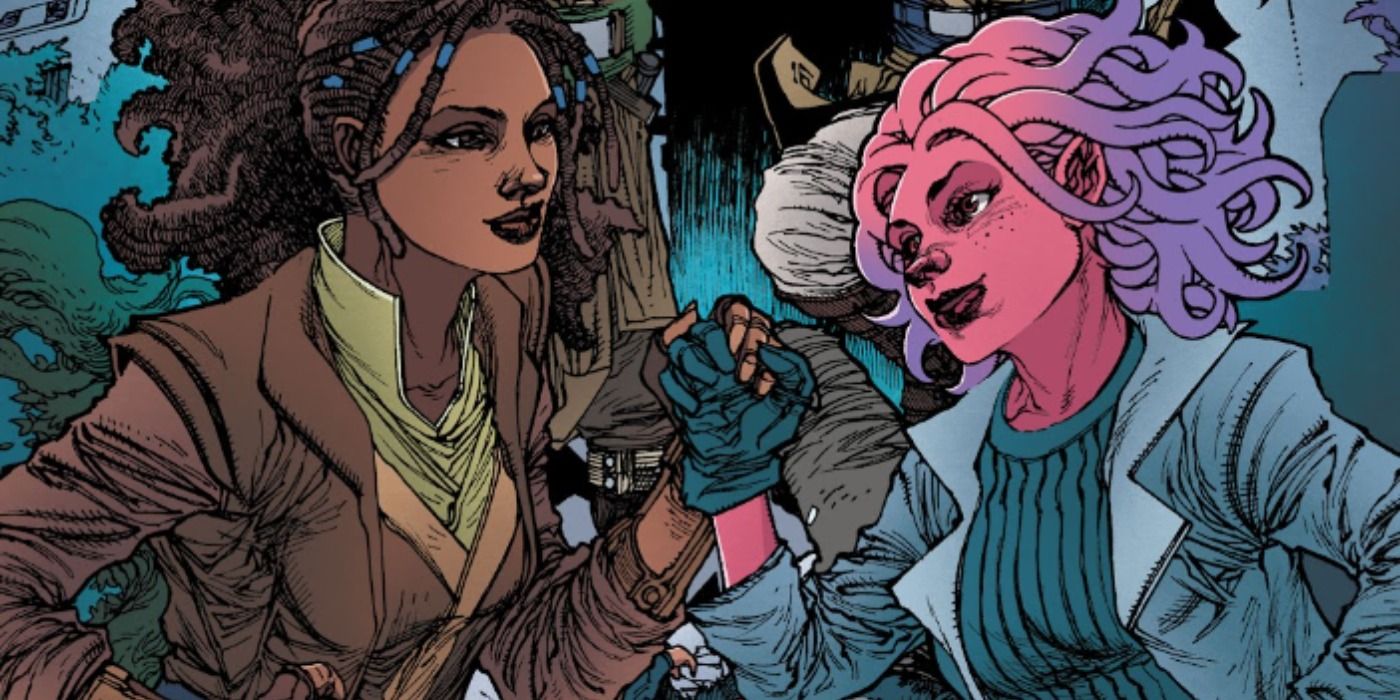Disney already has a solution to its lack of LGBTQ+ representation in Star Wars: Doctor Aphra. The sad truth is that the Star Wars movies have never done a particularly good job in terms of diversity. All the dialogue in the first movie was spoken by white straight characters, with Billy Dee Williams' Lando Calrissian introduced as the first Black secondary character in The Empire Strikes Back. Matters have been even worse in terms of LGBTQ+ representation, even in the old Expanded Universe; the first canonically lesbian character in Star Wars was Juhani, a Cathar Jedi Knight, who appeared in the Knights of the Old Republic game.
Star Wars traditionally took a tiered approach to canon; the highest level (G-level, "George-level" or "God-level") was seen as definitive, while everything else was secondary. That meant a slowly increasing amount of LGBTQ+ representation in the Expanded Universe felt secondary, as though it didn't really matter when compared to the movies or even to Star Wars: The Clone Wars. Matters weren't helped when the words "gay" and "lesbian" were banned from Knights of the Old Republic's fan forums in 2009, with community manager Sean Dahlberg arguing the terms "do not exist in Star Wars." Things did improve in the games, albeit slowly, but then came Disney's acquisition of Lucasfilm.
Disney acquired Lucasfilm in 2012, and in 2014 the House of Mouse made the decision to render the entire Expanded Universe non-canon. To be fair to Disney, the decision made business sense; canon and continuity were growing increasingly complicated, and the post-Return of the Jedi narrative would have restricted Disney's plans for a sequel trilogy. Unfortunately, because previous LGBTQ+ characters had all been part of the Expanded Universe, it effectively erased all representation at a stroke. Decision-makers at Disney would have been wise to realize they needed to improve the main franchise — but, unfortunately, they have yet to do so.
Star Wars' Troubled History With LGBTQ+ Representation
The sequel trilogy offered Lucasfilm an opportunity to redefine the Star Wars saga by improving its representation, and anthology films could easily have been used to write diversity into the background of the galaxy as well. Many viewers believed there were hints of a relationship between Finn and Poe in Star Wars: The Force Awakens, with the runaway stormtrooper and the Resistance pilot clicking straight away — and the respective actors seem to have liked the idea. Instead, Star Wars: The Last Jedi gave Finn a romance subplot with a new character, while Star Wars: The Rise of Skywalker introduced Poe's ex. Neither of these plots was handled particularly well, leading many viewers to complain this was a bungled attempt to ensure lead characters weren't perceived as gay.
Star Wars: The Rise of Skywalker did include a token lesbian kiss in the background, which Disney celebrated as a big deal and then cut in Singapore to avoid a higher age rating, as though it didn't really matter at all. The first lesbian kiss in Star Wars was shared between two Resistance fighters who'd participated in the final battle against Palpatine, Commander Larma D'Acy (Amanda Lawrence) and Wrobie Tyce (Vinette Robinson). Not only are these two characters minor players in the movies, but neither has been explored at all in any tie-ins — remarkable in a franchise where every alien in the Mos Eisley Cantina has a backstory.
How Doctor Aphra Could Join Disney's Star Wars Universe
When Disney reset the canon in 2014, they offered lovers of the old Expanded Universe a bone by promising that, from now on, everything would be equally canon. Lucasfilm Publishing has flourished in the Disney era, with a constant stream of tie-in novels, comics, and audiobooks. One of the most interesting new characters is Doctor Aphra, the Indiana Jones of Star Wars. She's a corrupt archeologist who hunts down precious artifacts and sells them on the black market for a profit. She was forcibly recruited by Darth Vader, entering into a partnership with the Dark Lord of the Sith that she feared could only end in her death, but she managed to survive. Doctor Aphra is something of an icon among Star Wars fans, a lesbian who's always on the run and consequently cannot make a relationship work. All this gives her a unique role in a galaxy that often seems rather monotone.
It's certainly ironic that Lucasfilm possesses the rights to an Indiana-Jones-esque character for Star Wars — and yet Doctor Aphra has, so far, only appeared in novels and comics. She would be perfect for a Star Wars Disney+ TV show, perhaps one set in between the original trilogy and the prequels that saw her explore the forgotten legacy of the Jedi and discover secrets of esoteric Force cults. Such an approach would fascinate viewers, while her explorations could even potentially unlock secrets of the Jedi that required a Luke Skywalker cameo; perhaps Doctor Aphra could be the one who discovers some of the ancient Jedi texts Luke possessed in Star Wars: The Last Jedi. Meanwhile, a starring role for this LGBTQ+ character would improve representation in the Star Wars galaxy in an instant, especially if skillful writers used the opportunity to explore Doctor Aphra's tortured love life.
Star Wars Graphic Novels Already Include More Queer Characters
In truth, Lucasfilm Publishing has been putting the film studio to shame for years, fixing the Star Wars diversity problem in the background. Chuck Wendig's "Aftermath" trilogy — the first books to be set post-Return of the Jedi, and a major stepping-stone to the sequel trilogy — featured a prominent gay character, Sinjir Rath Velus. There have been a number of bisexuals, such as prominent Imperial Rae Sloane and Republic pilot Yrica Quell, and trans and non-binary characters such as Terec and Ceret, both Jedi Knights of the High Republic Era.
Lucasfilm's Star Wars: The High Republic transmedia initiative has been particularly notable in terms of adding diversity to the galaxy, with Daniel Jose Older's delightful Star Wars: The High Republic Adventures series developing a relationship between Jedi Padawan Lula Talisola and Zeen Mrala, who is Force-sensitive. Older is a phenomenal writer, and he's told a beautiful story in which two teenage protagonists discover their feelings for one another and must decide what to do about them. The narrative is, of course, told in the context of Jedi concerns over attachment, but this doesn't feel like the tragedy of Anakin Skywalker and Padmé Amidala given an LGBTQ+ twist. Rather, it feels like something fresh and unique.
Lucasfilm's current approach to canon means all these characters are — in theory — as significant as the ones seen on the big or small screen. For all that's the case, though, the reality is that they lack the cultural significance of the likes of Din Djarin and Fennec Shand, simply because fewer people have come across their stories. There are certainly opportunities to use them, given Rae Sloane was a key figure in the origin of the First Order and Zeen and Lula could even appear in the Star Wars: The Acolyte TV series set during the High Republic Era, but the easiest decision of all would be for Lucasfilm to greenlight a Doctor Aphra TV series as the beginning of a perfect reset for Star Wars.




